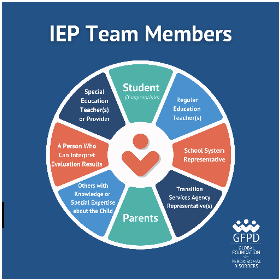In this blog series, we have already explored the Pyramid of Learning for deafblind learners, examined Modifications and Accommodations, discussed the significance of an Individualized Education Program (IEP), and learned about Tactile Techniques for Deafblind Learners. We will now discuss the nuts and bolts of Extended School Year (ESY) services.
PART FIVE: EXTENDED SCHOOL YEAR
Have you discussed ESY services with your child’s IEP team this year yet? In many cases, families attend one annual IEP for their child with a disability, and if that took place in the fall or winter, the discussion may have been very brief and deferred until a later date, which often falls through the cracks. It’s not too late to act! Read on to discover what these services are, how individuals qualify for them, and how to request them.
Spring has officially arrived in the US and families across the country are preparing for the upcoming summer break from school. For families with children who have peroxisomal disorders, this time of year may bring a new set of unique challenges and concerns. At the Global Foundation for Peroxisomal Disorders (GFPD), we understand the complexities that these families face, and are here to provide guidance with this back-to-school series and support as you navigate the school year and beyond.
Extended School Year (ESY) services are special education and related services provided beyond the traditional academic year for children with disabilities. Therefore, ESY services frequently occur during the summer, but they may also occur during other extended breaks, such as winter break.
When do you decide? Decisions about ESY services may be made during a regular Individualized Education Program (IEP) meeting or an ESY meeting.
Who decides?
The IEP team decides if a child is eligible for ESY services. Remember that you are an integral member of the team!! You can also invite others, such as professionals or family members and friends, who possess knowledge or expertise that could benefit the team

How is the decision made? Services are always based on the needs of the child as outlined within the IEP. Having an IEP does not mean a student automatically qualifies and not all students with IEPs will need these services. While states and districts set rules for eligibility, the federal Individuals with Disabilities Education Act (IDEA) regulations do offer general requirements. The determination must be done on an individual basis.
EXAMPLE CONSIDERATIONS
- Regression and recoupment
- “Regression refers to a decline in knowledge and skills that can result from an interruption in education; recoupment is the amount of time it takes to regain the prior level of functioning.”
- Child’s rate of progress
- Emerging skills (e.g., breakthrough opportunities or window of opportunity
- “The child is in a critical stage of developing a skill which has great potential for increasing his/her self-sufficiency. If such a skill is not completely acquired and mastered, the current level of acquisition will likely be lost due to the interruption of summer vacation.”
- Child’s vocational needs
- Areas of the child’s curriculum
- Interfering behavioral/behavioral problems
- Availability of alternative resources
- Nature and/or severity of the child’s disability
- This is a key factor in ESY eligibility, and no disability category may be excluded from consideration for ESY.
- “Children with severe disabilities are more likely to be involved in ESY programs, since their regression may be more significant, and their recoupment abilities may extend over longer time.”
ESY MYTH BUSTERS
- ESY is not summer school. Although ESY services may take place during the summer months and break, these services are different than summer school.
- Schools cannot limit ESY services because of their limited financial resources or staff. ESY services are determined based on the child’s needs.
- Transportation to and from these ESY services listed within the IEP are the responsibility of the school.
- The ESY services must be individualized to each student when it comes to the content of the program, as well as the duration needed.
- The child does not have to demonstrate regression to qualify for ESY services.
- Regression is not the only factor in deciding if a child needs ESY services.
- ESY services are delivered in a variety of environments.
How do I request ESY services? Write a letter or email requesting an IEP meeting be scheduled to discuss your child’s need for ESY services. Check out the tips below to help you prepare for your upcoming IEP meeting.
ESY IEP MEETING PREPARATION TIPS
- Obtain a copy of your special education regulations and check the criteria for ESY eligibility in your state before requesting these services.
- Review your child’s current IEP.
- Ask yourself if you have evidence supporting the need for these services and make sure you are prepared to share this information at the meeting.
- Make sure you are receiving a Prior Written Notice (PWN) after every IEP meeting. School districts provide this to parents before changing or refusing identification, evaluation, placement, or Free and Appropriate Public Education (FAPE). It outlines actions proposed or refused, explanation, information used, other options considered, and relevant factors. If you do not receive a PWN after a meeting, then request it.
- Use the 4 Ps: Preparation, Politeness, Patience, and Persistence.
- Be aware of emotions when interacting with school district staff.
- Look for and ask for help if needed.
Keep an eye out for future blog posts in this GFPD educational series, where we will explore assessments for deafblind learners, the toll of advocacy, deafblind intervention, steps to take when in disagreement with the school districts decisions, and more!
Written By Katie Sacra
April 8, 2025
Sources: GFPD Webinar: Helpful Advocacy Tips for Parents at IEP Meetings and Wrightslaw: All About IEPs
